For many people with kidney stones, navigating a high oxalate foods list can be frustrating. Oxalate is a foreign concept to many people and it can see like there are are endless lists you “should” follow. And, information on the high oxalate foods list can be different from various sources!
A high oxalate foods list found on the internet may be based on old science, or just plain incorrect. Some of the conflicting information out there might be because it is difficult to accurately measure oxalate in food. Much of the early oxalate research used inaccurate methods. The oxalate list compiled at Harvard is generally considered an accurate source (1). I use the information found on the Harvard list for all the information found on The Kidney Dietitian. I have created my own high oxalate foods list based on the Harvard oxalate list with standardized portion sizes.
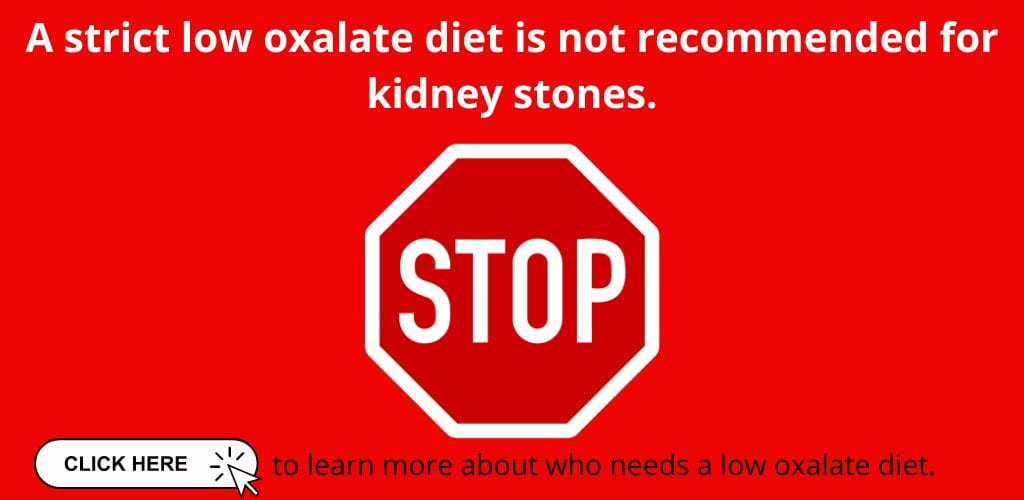
Who Needs to Follow a High Oxalate Foods List?
People who have calcium oxalate kidney stones may need to cut back how much oxalate they eat. It is important to remember that poring over these high oxalate foods lists is probably unnecessary. The other pieces of a healthy kidney stone diet (limiting sodium & sugar, keeping protein to appropriate amounts and including enough calcium) are more effective at kidney stone prevention compared to strict oxalate restriction.(2) In fact, the DASH diet, which actually promotes many traditional high oxalate foods like nuts, seeds and whole grains, has been shown to reduce the risk of kidney stones.(3)
For most people, avoiding the 5 common high oxalate foods (spinach, almonds, rhubarb, beets and raspberries) along with eating dairy with meals is enough to lower urine oxalate to safe levels. But, always make sure to work with your dietitian or doctor who knows your medical history and lab results. A 24-hour urine test is the best way to know what diet is best for you.
But I Still Have Questions About the High Oxalate Foods List!
However, I know many people with kidney stones have LOTS of questions about the oxalate amount in specific foods. This makes sense because oxalate is perhaps the most unique piece of a healthy kidney stone diet. After all, most of us know that too much sugar and salt are bad for us! Oxalate is a new concept for many people just starting a healthy kidney stone diet.
Here is a list of the foods people most ask about for a low oxalate diet. Let’s jump in!
Coffee Oxalate
Low Oxalate (1 cup = 2 mg oxalate)
There is some conflicting evidence about the amount of oxalate in coffee. One study found anywhere from 20-40mg of oxalate in 3.3 fl oz of coffee. Instant coffee had even more oxalate: up to 52mg!(4) But, our trusty Harvard oxalate list puts coffee at only 2 mg per cup.

More importantly, there have been studies showing a reduced risk of kidney stones in people who drink coffee.(5) Research showing a reduced risk of actual kidney stone formation is more compelling than possible high oxalate content.
My advice is that coffee is absolutely fine on the kidney stone diet! I recommend trying to keep it to 1-2 cups per day to avoid too much caffeine. Excess caffeine can contribute to high blood pressure.
Be careful with how much sugar you add to coffee. Sugar in flavored creamers or fancy coffee drinks can add up quickly! Too much added sugar increases the amount of calcium in your urine, which is the biggest driver of kidney stone formation. Remember: “raw” sugar, honey, agave and other sweeteners are the same as sugar!
Avocado Oxalate
Medium Oxalate (1/2 avocado = 9.5 mg oxalate)
I put avocado in the “medium” category for oxalate. A little is absolutely okay!
Avocado is a great way to get in heart healthy fats and soluble fiber. Try avocado at breakfast with avocado toast or as a topping for eggs. Or, add a few slices to a sandwich or salad.
Arugula Oxalate
Low Oxalate (1 cup raw arugula = 0.12 mg oxalate)
Arugula comes up all the time in low oxalate diet conversations. This makes sense, due to the similarity to spinach, which has an astounding 750mg oxalate per cooked 1/2 cup!
Luckily, arugula did not inherit the oxalate gene. Arugula is very low in oxalate. Arugula makes a wonderful base for hearty low oxalate salads, or a simple side salad. It is also a great addition to sandwiches or eggs if you enjoy that peppery flavor!
Almond Milk Oxalate
High Oxalate (1 cup almond milk = LIKELY VERY HIGH oxalate)
Unfortunately, almond milk is not on our Harvard oxalate list. But, almonds are. Only 1/4 cup of almonds has a surprising 122mg of oxalate. Because oxalate is water soluble, there is every reason to deduce that oxalate in almonds will be transferred to almond milk. Almond milk is on our high oxalate food list.
In most cases, I recommend cow’s milk instead of milk substitutes for people with kidney stones. Milk substitutes are not naturally high in calcium. Instead, they are supplemented with calcium. Some research has shown higher urine calcium with calcium supplements rather than naturally occurring calcium.(6) Therefore, there is concern that milk substitutes may raise urine calcium more than cow’s milk.
Of course, cow’s milk is not within reach for everyone. If you do not tolerate cow’s milk, or avoid it for religious, cultural or environmental reasons, calcium from milk substitutes is much better than no calcium at all. Oat or rice milk are lower oxalate milk substitutes for people with kidney stones rather than almond milk.
Blueberries Oxalate
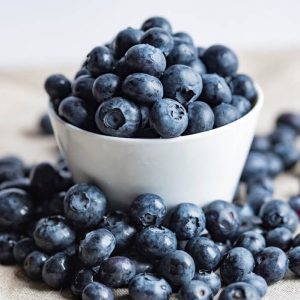
Low Oxalate (1 cup blueberries = 4 mg oxalate)
Good news! Blueberries are very low in oxalate! They are a great choice for a kidney stone diet.
Enjoy them by themselves, or on yogurt to help meet your daily dairy goal of 3 servings per day. You could also try this amazing blueberry compote (just cut the sugar in half) as a lower sugar alternative to syrup on pancakes or waffles.
Kale Oxalate
Low Oxalate (1 cup raw kale = 2 mg oxalate)
Similar to arugula, kale is another very healthy leafy green for people with kidney stones. Kale is very low in oxalate and is a wonderful substitute for spinach in recipes. Sauteed kale with garlic is a tasty side dish. Homemade kale chips are an excellent healthy snack!
Oatmeal Oxalate
Low Oxalate (1 cup cooked oatmeal = 0mg oxalate)
Oatmeal surprisingly has NO oxalate in it according to the Harvard oxalate list. Oatmeal is a wonderful whole grain to eat on a healthy low oxalate and kidney stone diet.
Of course, oatmeal makes a tasty breakfast. Top it with a few dried cranberries, raisins or your favorite fruits. Savory oatmeal dishes have also become popular in recent years. Try these savory oatmeal dishes if you are feeling experimental! (Just swap the spinach in “The Greeny” for kale!).
Broccoli Oxalate
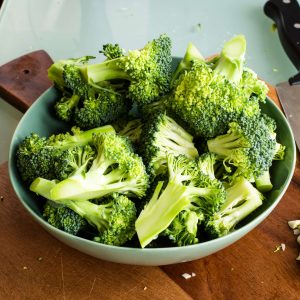
Low Oxalate (1 cup raw broccoli = 2mg oxalate)
Broccoli is another very healthy green vegetable for a kidney stone diet. Enjoy it raw (broccoli makes an easy snack with hummus or your favorite low sodium dip!) or steamed or roasted as a side dish.
Try these amazing low oxalate broccoli recipes:
Cabbage Oxalate
Low Oxalate (2 cups raw cabbage = 2mg oxalate)
Cabbage is yet another healthy vegetable for the kidney stone diet.
Personally, I think cabbage is one of the most underrated vegetables! Cabbage is cheap and lasts a long time in your refrigerator. It is also very versatile! Cabbage can do much more for us than coleslaw. Although, coleslaw is delicious too!
Try these unique cabbage recipes!
- Cabbage casserole
- Mediterranean stuffed cabbage rolls
- Sauteed red cabbage (one of my winter favorites!)
- Roasted cabbage wedges with Dijon sauce
- Cabbage pancakes (just cut the soy sauce in half and use low sodium!)
Celery Oxalate
Low Oxalate (1 stalk raw celery = 3 mg oxalate)
Celery is another great low oxalate vegetable! Of course, celery sticks can be a tasty snack. Try them with a little sunflower butter, rather than peanut butter for a lower oxalate topping!
Along with onion and bell peppers, celery is a critical piece of what is known as the “holy trinity” in Cajun cooking. Many of the amazing traditional dishes in traditional Louisiana cooking such as etouffee, gumbo and jambalaya all start with sauteeing these ingredients. Cooking chopped celery, bell peppers and onion in a little oil or butter to start soups, stews or sauces gives your final dish tons of flavor. This can help cut back the amount of salt you need to add!
Bread Oxalate
Varies in Oxalate Content (1 slice white bread = 5mg oxalate; 1 slice whole wheat bread = 7mg oxalate)
Bread is one of the most common foods people ask about. Oxalate content can vary quite a bit depending on the ingredients. In general, whole grain bread does have more oxalate compared to white bread. However, whole grain bread also contains many healthy things, like fiber.
The Importance of Fiber
Most people in the United States are not getting enough fiber; the average intake is about 17 grams of fiber per day. (7) This is not much fiber compared to the recommended intake of 25 grams for women and 38 grams of fiber for men (8). Low fiber diets are associated with an increased risk of diabetes, obesity, heart disease, hypertension, stroke, digestive health and some cancers.(9) So, it is very important to make sure eat enough fiber!
Whole grains are a very important source of fiber in our diet. Fruits and vegetables also have fiber, but whole grains contribute a majority of the fiber we eat.(10) Because of the importance of fiber, I recommend whole grains over refined grains, whenever possible. According to the Harvard oxalate list, white bread only has 2mg less oxalate (or only 2% less of your daily oxalate allowance) compared to whole grain bread per slice.(1) In terms of fiber, white bread has only 0.7 grams compared to at least 2 grams in whole grain bread (11, 12).
Because the health benefits of fiber are so clear, and we know it is difficult to meet fiber goals, it makes sense to eat whole grains over white or refined grains. However, for people who need to be very strict with dietary oxalate restriction, whole grain bread may not be the best choice. Always ask your dietitian what is best for you!
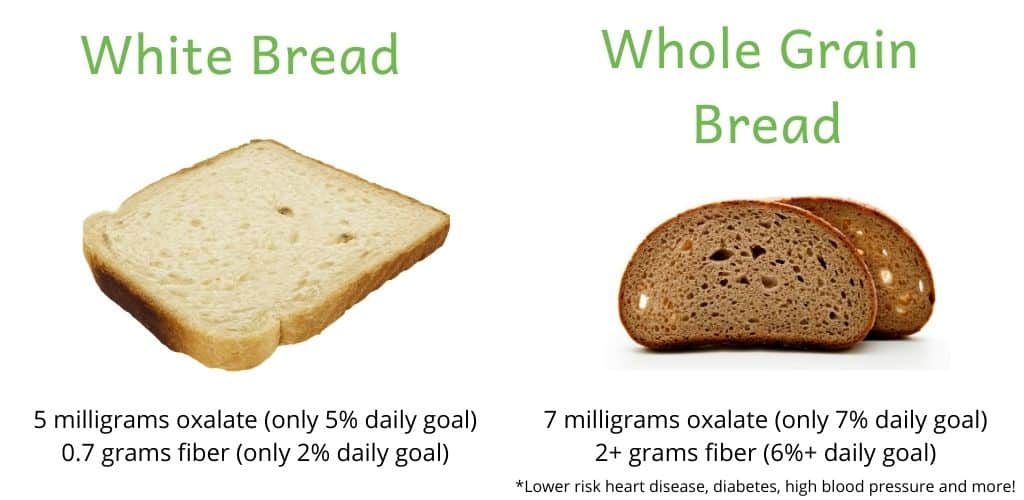
Check Ingredients
That being said, all whole grain bread is not created equal. Some whole grain breads are made with many seeds, nuts or flours that contain very high oxalate ingredients. Check the food label for any unique ingredients such as rice bran or almond flour, which are very high in oxalate. Because oatmeal is low in oxalate and a great source of fiber, oatmeal bread is a wonderful option for a fiber-rich low oxalate diet.
It is also important to check how much sodium is in the bread you buy. Bread and other carbohydrates can contribute a surprising amount of salt to our diets! When you are perusing the ingredients on the nutrition label, don’t forget to look for sodium too!
Strawberries Oxalate
Low Oxalate (1 cup raw strawberries = 4 mg oxalate)
Strawberries, blueberries, blackberries and cherries are all wonderful low oxalate fruits for a healthy kidney stone diet. Raspberries are the one berry exception, coming in at 48mg oxalate per cup.
Strawberries make a great addition to yogurt in the morning. Or, add them to a summer inspired salad. Try this strawberry salad, just make sure to use pecans rather than almonds.
Lettuce Oxalate
Most are Low Oxalate (1 cup raw romaine or iceberg = 0 mg oxalate)
Other than spinach, which is notoriously high in oxalate, most types of lettuce are low in oxalate. Romaine, iceberg, kale and endive lettuces are included on the Harvard oxalate list and have nearly zero oxalate. Arugula, most spring mixes, butter lettuce, raddichio, Boston and bibb lettuce are also good choices.
Beans Oxalate
Varies in Oxalate Content (1/2 cup fava beans = 20mg oxalate, 1/2 cup navy beans = 76mg oxalate, 1/2 cup kidney beans = 15mg oxalate, 1/2 cup soybeans = 48mg oxalate)
Beans are notorious as a “no-no” on the high oxalate foods list. But, the oxalate content varies widely between bean type. Navy beans and soybeans are very high in oxalate. Whereas fava and kidney beans are somewhere in the middle. Garbanzo beans and black eyed peas are also generally considered to be lower in oxalate.
These lower oxalate beans likely can be included in a healthy kidney stone diet in healthy portions. Generally, I recommend 1/2 cup portions of beans and lentils. Also, pairing these higher oxalate foods with a serving of dairy helps stop the absorption of oxalate. As always, ask your dietitian what is best for you based on your lab results.
Importantly, remember that non-starchy beans, like green beans or wax beans, are a low oxalate vegetable choice.
What Do I Eat Following a Low Oxalate Foods List?
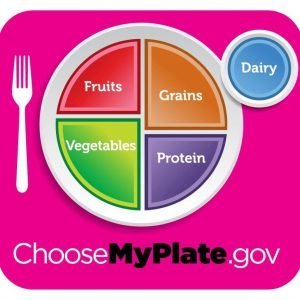
Always remember that your whole diet pattern is MUCH more important than stressing over the oxalate content in specific foods. For people with calcium kidney stones, a healthy diet focuses on: (13,14)
- Low sodium (1500-2300mg per day)
- Low added sugar (keep desserts, sugar and candy to a minimum!)
- Moderate protein (for most people, 0.8 grams per kilogram body weight)
- Moderate oxalate (around 100mg per day; here is a complete oxalate food list)
- Lots of fluid! (at least 3 liters per day)
Here is an example low oxalate meal plan. You can also read more about a healthy kidney stone diet from Dr. Fred Coe, a colleague of mine at the University of Chicago. However, always remember to work with your dietitian or doctor who knows your medical history and lab values to figure out what diet is best for you!
Happy Eating!
Melanie
Want More Low Oxalate Meal Ideas?
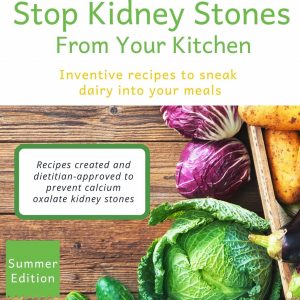
Check out my eCookbook just for people with kidney stones! My cookbook includes 30 low oxalate recipes that fit in a healthy kidney stone diet.

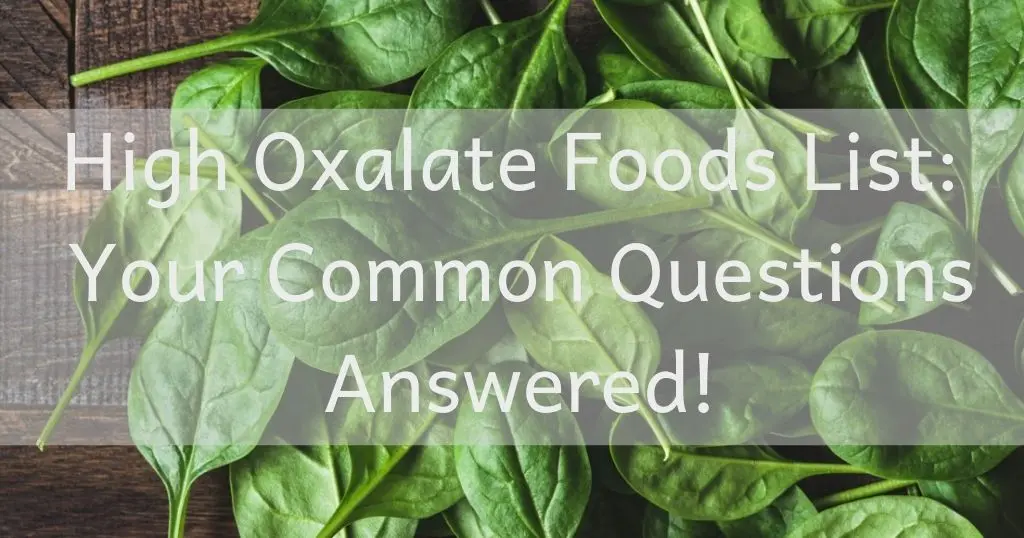
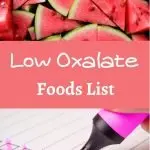
Can you explain the differences in corn products? I have read that corn flour is low but grits are high.. that cornmeal is low… but polenta?
Also: oranges, grapefruits etc are high but their juice is low…. ?
I have even read that zucchini is high…
Hope you can help
Sounds like you’ve fallen into the common confusion of the endless conflicting and INCORRECT oxalate lists online. The Harvard oxalate list is generally accepted as one of the most accurate lists in academia and research. My list is based on the Harvard list – you can find it here!
Are cordycep mushrooms high in oxalates in tea and powder form? Thank you!!
I don’t have an accurate amount for this. Mushrooms generally are very low oxalate.
What is oxalate count in mg if I bake potato with no skin eaten?
All counts say “with skin”
I want count on Etamame beans from pods.
You can find a relatively accurate oxalate count for foods from Cronometer! I HIGHLY discourage counting how much oxalate you eat because it is truly impossible to do accurately – and it is INCREDIBLY rare that someone needs to be this diligent about oxalate. 99% of the time, there are MUCH more important things to focus on for stone prevention than oxalate. This article will help!
Your oxalate list does not agree with a research article from a program at Harvard called
DASH (DIGITAL ACCESS TO SCHOLARSHIP AT HARVARD) “Nutritional Management of Kidney Stones (Neephrolithiasis).” 2015.
Both figures are way off!! Radishes 480 DASH YOUR LIST “0”
Broccoli 190 DASH YOUR LIST “2”
Celery 190 DASH YOUR LIST “5”
Can’t find my copy of the early Harvard Chan School list which I understand may be
outdated or inaccurate? Thanks for your feedback-much appreciated.
All my oxalate info is based on the Harvard list – with a few changes me and my colleagues have found to be very inaccurate. I also adjusted the portion sizes to be more in line with what people actually eat and standardized across the list. I’m not exactly sure which discrepancies you are calling out.